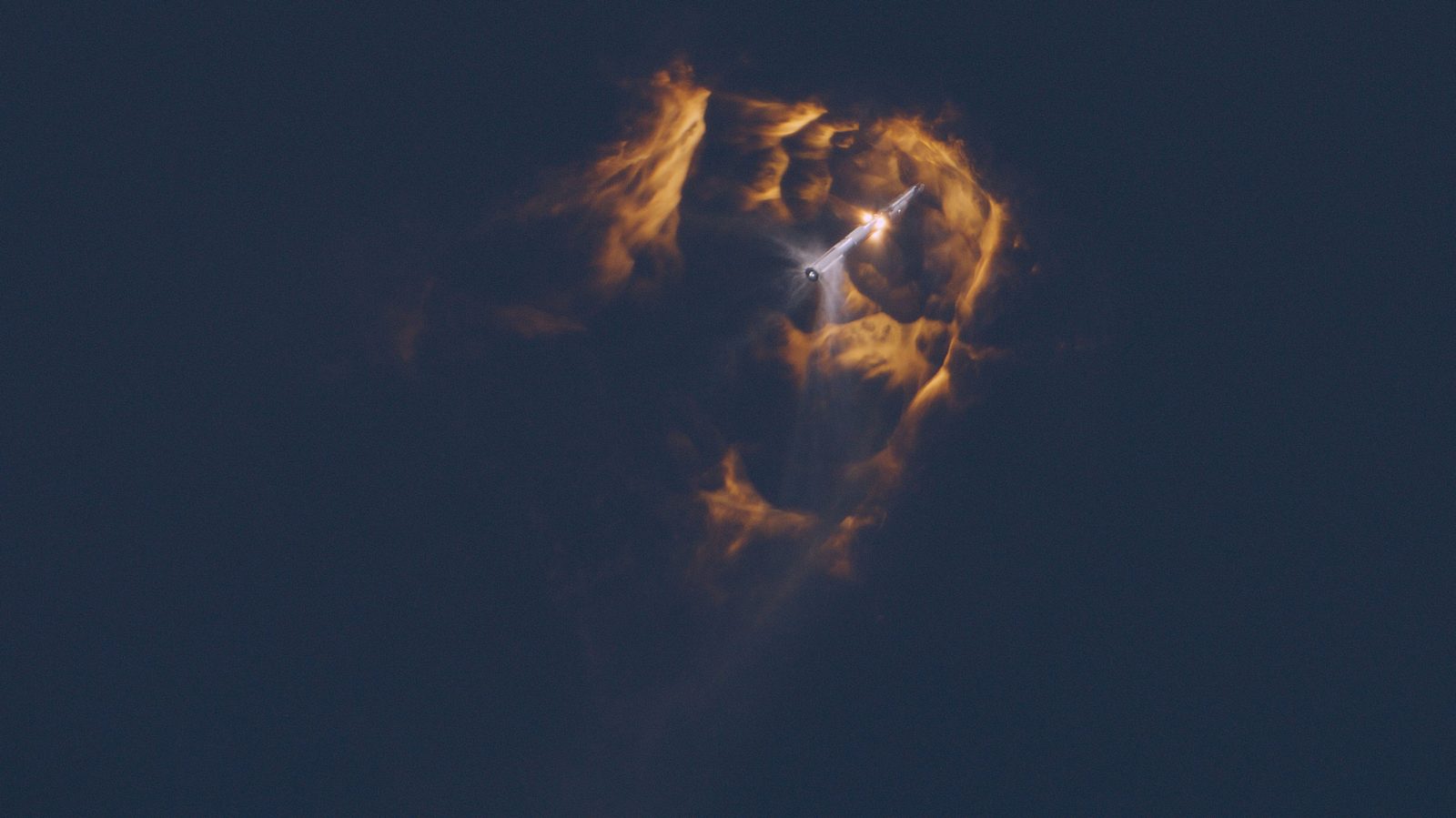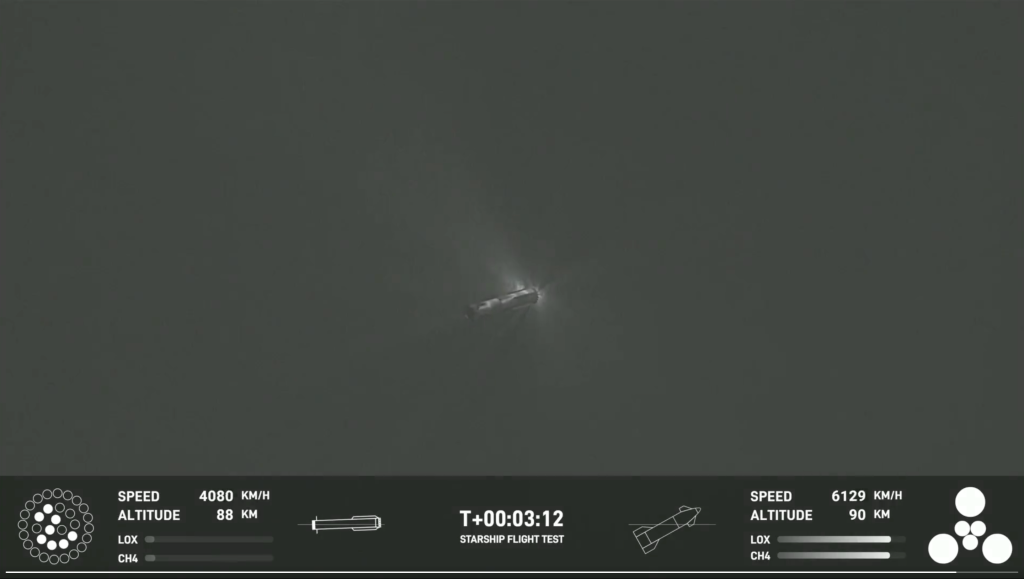
Earlier today SpaceX launched its second fully integrated Starship rocket. While it didn’t make it to Hawaii, the launch got much further than its previous flight. However, a lot still didn’t go right for the company, here’s a break down of all the bad stuff. (Here’s the good stuff article)
Table of contents
Starship debris makes it to Atlantic Ocean
A couple minutes into Starship’s launch Saturday, the second stage vehicle experienced some sort of fault that required its flight termination system to be triggered automatically. The rocket’s booster also faced a dynamic event during boost back that caused it to be loss as well.
Since both of these vehicles were high up in the atmosphere, their fuel and debris showed up on weather radars as they descended. As expected, Booster 9’s remnants were spread across the Gulf of Mexico while Ship 25’s debris was seen all the way out towards Puerto Rico’s East Coast.
What happened to Booster 9?
I’ll be using Scott Manley’s breakdown of Starship’s launch as sort of a guide for some of this. Its very well done so make sure to give it a watch. It’s important to note that SpaceX or Elon Musk has yet to share any details into what caused either of Booster 9’s and Ship 25’s rapid unscheduled disassemblies.
Super Heavy Booster 9 lifted off from Starbase‘s launch mount at roughly 7:04 A.M. CT. It performed perfectly up and through stage separation. Shutting down its 33 engines to just three in preparation for hot staging. The booster then begin its flip for booster back once Ship 25 was clear.
Post flip, several Raptor engines on Booster 9 failed to relight and some began shutting down early. Flashes around the rear of the booster can be seen that line up with engines shutting down on SpaceX’s graphic.

One by one these engines began failing until the booster ruptured at about T+3:17. SpaceX did not confirm if Booster 9’s flight termination system was triggered or not but the likely hood of this failure being linked to a violent shutdown of a Raptor engine I would say is high.
Join our Discord Server: Join the community with forums and chatrooms about space!
Starship 25’s near perfect ascent
The shining moment of SpaceX’s IFT-2 flight was seeing Ship 25 fly almost far enough to cross over the horizon. We’ll discuss the successes of Ship 25 in a future article but right now, we gotta talk about what went wrong.
Almost right at the end of Ship 25’s burn SpaceX announced it lost connection with the vehicle and believed the flight termination system was triggered automatically. It’s hard to see, but you can see a destructive ball of gasses on stream before the tracking camera cuts to Starbase’s control room.
SpaceX was targeting orbital speeds, but not orbit, so when Ship 25’s engines cut, the vehicle should have been moving at a staggering 27,000 km/h (according to Manley). However, at around the T+8:00 mark when the six Raptor engines on Starship shut down, it was at a little less staggering 24,000 km/h.
After shutdown there was a puff of gas, which could have been the engines shutting down or some other event, then a much larger puff of gas that lines up with the FTS terminating the flight. All we know at the moment is that The FTS was trigger by Starship but no one has stated from SpaceX as to why it was triggered.
Thermal protection tiles still falling off
If you’ve been following Starship development for some time you’ll know that falling thermal protection system tiles isn’t knew. Photos of Starship in flight show numerous tiles falling off as it ascended. If Ship 25 would have made it to reentry, there would have been a low chance of it surviving.
I don’t think anyone that knows spaceflight history needs to explain how important keeping TPS tiles attached to your spacecraft is.
The good news is that SpaceX might have already fixed whatever the cause of these falling tiles was. According to Zack Golden on X, SpaceX tested each tile on Ship 28 with a suction cup but did not do this for Ship 25.
So maybe whenever IFT-3 comes around those tiles will stay firmly attached to their rocket.
Another mishap investigation
Speaking of IFT-3, I would bet that mission would not be taking place this year.
The FAA announced shortly after Starship’s flight declaring a mishap and that it would oversee an investigation by SpaceX into what caused the failure. With only a month and a half left in the year, the likely hood of the FAA signing off on another flight this year and SpaceX making those changes is slim.
If SpaceX is to achieve its goal and meet NASA’s 2026 Artemis 3 launch date, Starship needs to fly a lot. That won’t happen if the FAA has to get involved after each launch and only give SpaceX the ability to launch one Starship at a time.
But was this really a “failure?”
However, SpaceX can’t get to that point with failures like these and I use the term failure very loosely. Musk and his company test hard and fly harder, pushing what is possible with these missions. When you work in that realm things become… dynamic, but the data you gather from it ensures it doesn’t happen again.
So while Starship didn’t get to take a swim in Hawaii, the success in SpaceX’s IFT-2 mission is that it got closer to reaching that goal.
FTC: We use income earning auto affiliate links. More.




Comments